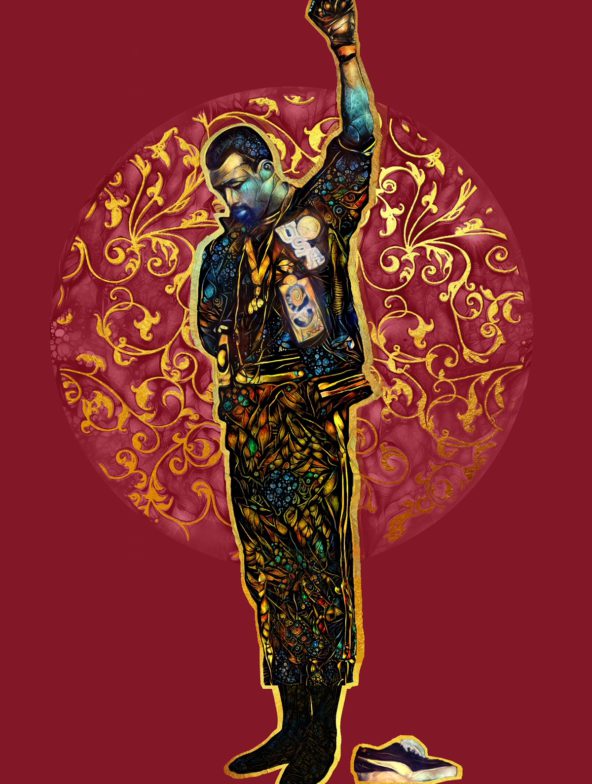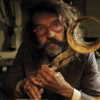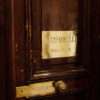As the 2024 Olympics come to a close, we take you back to the 1968 Olympics in Mexico City. Turbulent times, but a clear message from John Carlos. While his sign of defiance marked the ’68 Olympics, John Carlos’ journey for what was right had started long before he laced up track shoes. In Issue 2 we have a talk with. John Carlos as he shares parts of his journey.
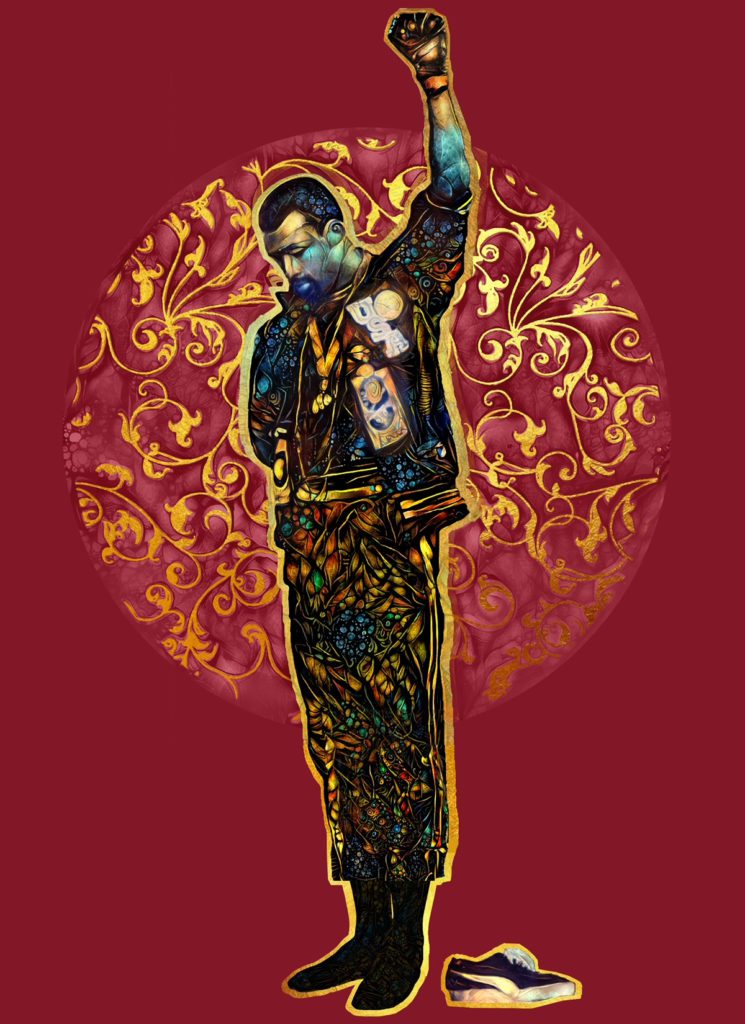
On October 16, 1968, at the Summer Olympics in Mexico City, two African American athletes stood upon the podium after winning gold and bronze medals in the 200M race. During the playing of the American National Anthem the two athletes, Tommy Smith, and John Carlos, made history, not for just winning those medals in the world’s most prestigious sporting competition, but for what came next: As the anthem played, they raised their black gloved fist in the most widely recognized protest of the lack of human rights in the United States and around the word. It was a grand gesture at a grand moment.
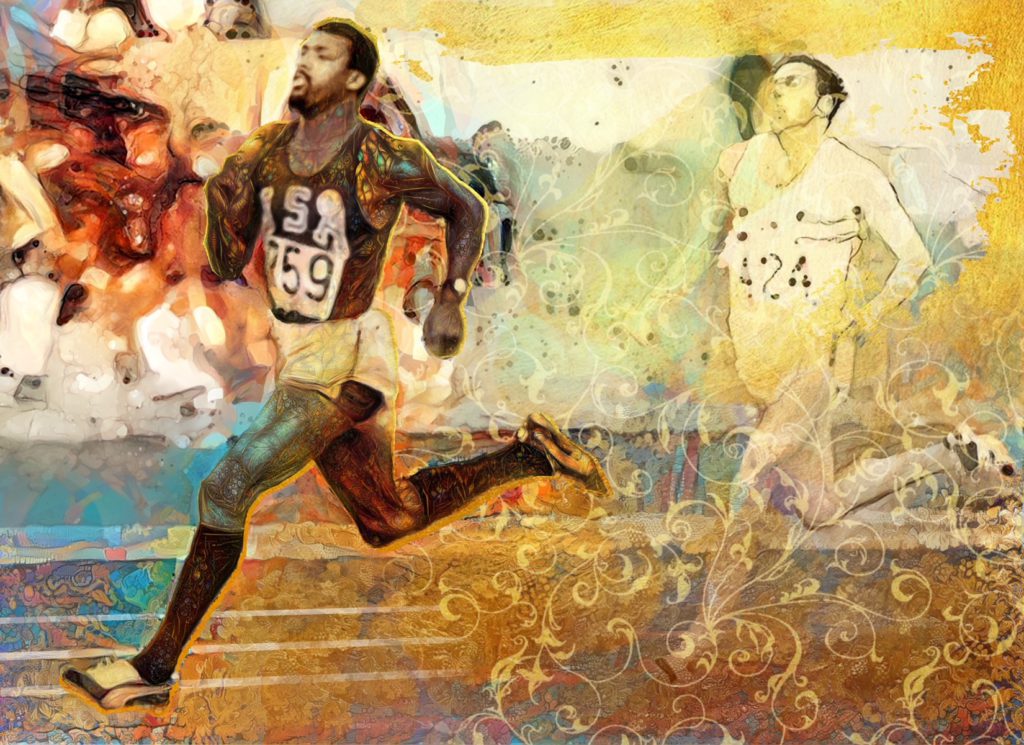
As we now know both Tommy Smith’s and John Carlos’ path to that point on the podium was part of a journey undertaken to address, through action injustice, both witnessed and experienced. In the case of John Carlos, the action part started at a noticeably youthful age. He shared some his experiences in a recorded Zoom interview on September 20th, 2021, with Guerre, CEO of No Chaser Magazine. In that interview John Carlos talked about his early experiences fighting for rights and the values that his parents had instilled in him.
Born June 5th, 1945, in The Bronx, NY, John Wesley Carlos was the son of Vioris and Earl Carlos. His mother was born in Jamaica, West Indies but raised in Santiago, Cuba. His father hailed from South Carolina and was a World War I veteran. The family moved to the Harlem River houses in Manhattan where Carlos, at the age of thirteen, had his first run in with the law over conditions in the housing project.
A Conversation About Trees
Carlos goes on to relate that in his project there were spaces where kids could play ball and the mothers could sit and chat among themselves. Carlos’ mother however, who worked nights at Bellevue after completing training to become a nurse, would walk past the Pit, as it was called, nod at her children and go immediately up to the apartment. This bothered young Carlos and he confronted his mother about it, asking her if she thought that she was too good to associate with the other ladies that sat in the recreation area. He tells us that his mother, with tears in her eyes, explained that she would never think that she was too good to associate with her neighbors nor would she ever teach her children to think of themselves that way. She explained that the trees that adorned the Pit area were infested with caterpillars. And should these caterpillars attached themselves to her skin they would leave a nasty rash and she simply could not go into work with rashes all over her body. Moved by his mother’s tears and upset that she was unable to enjoy the Pit area because of the infestation, young Carlos, called Crazy Johnny by the neighbors because of his penchant for speaking up about things that others either wouldn’t or couldn’t, took it upon himself to bring this issue up with management.
Walking directly into the housing manager’s office Carlos demanded that the trees be sprayed to rid the Pit area of the caterpillar infestation. He was immediately told to leave the office or else. Not willing to take “no” for an answer, young Carlos insisted that as a resident, it was his right to be in that office demanding that something be done. Naturally, the manager summoned the police and housing security via a secret panic button underneath his desk. Confronted by the police officer whom everyone knew as Bill, Carlos issued a warning to the manager that if something weren’t done in 48 hours, he would take matters into his own hands. After the 48 hours transpired, young Carlos went over to the local mechanic and obtained a large can of gasoline. His plan was to slowly smoke out the caterpillars. The only problem was this: You could employ that method with kerosine, in fact, farmers often did this to rid their crops of pest. Gasoline, however, was an entirely different matter, a fact that young Carlos was soon to find out. Approaching the Pit with gasoline in hand and after telling everyone in the Pit to go to the other end of the tunnel (entryway into the Pit area) or leave entirely, young Carlos doused the first of four trees, lit a match, and was nearly burned himself when the gasoline quickly started to consume the infested tree. Though slightly singed, he immediately did the same thing to the second tree and then third. By the time he was ready to douse the fourth and final tree the police had already descended upon him and took him off the local precinct. Eventually, Carlos’ father, Earl, was contacted by the police and went to fetch his son. Rather than scold him, Earl told him that he was potentially in some serious trouble and could end up in Reform School. But young Carlos insisted that they had to act because management wouldn’t. What came next is the truly remarkable.
At the hearing, the judge asked Carlos’ father why his son did what he did. Did he have any mental deficiencies? His Father replied, “Non that I know of your Honor.” The judge then addressed young Carlos himself and asked him why he did what he did especially since the fire could have gotten terribly out of hand an escalated to burn the facility and injure people. Carlos related the conversation that he had with his mother. He then related how the kids would have to go through a white housing complex to swim in the pool there. And those trees where routinely sprayed. But the Harlem River houses hadn’t had their trees spayed in years. To his credit the judge summoned the building manager and questioned him about the tress and their contract for spraying. As it turned out the building manager had been pocketing the funds that were allocated for spraying the trees at the Harlem River housing project. In a dramatic scene at the court the judge ordered the building manager to hand over his keys and he was escorted out and led off into jail. This scene unfolded in front of the residents of the housing project. Carlos was hero and most importantly, his father told him how much respect he had for him. Young Carlos was just 13 years old.
Robin Hood to Running to Rights
John Carlos witnessed the disintegration of black families and business in Harlem due to the flooding of the neighborhood with drugs, from the psychotropic hallucinogenic known as King Kong to Heroin. Carlos had seen all of this unfold around him and it spurred him to ask those addicted to the drugs “Why are you doing this (taking drugs)? The answer was profound. The psychological toll that systematic racism had on black men in the US, especially those communities in the city, caused a sizable number of men to turn to drugs. He is very much familiar with the devasting effects that this had had on the black community. Further he goes on articulate how the welfare system was designed to keep black families apart by forbidding single a mother from forming a union with a man who could function as a father figure to fatherless children and contribute financially to the household. Never one to sit still Carlos was determined to act to change things in the neighborhood.
Carlos and his friends had come upon freight trains that were full of goods by Yankee Stadium. Inspired by Errol Flynn’s depiction of Robin Hood, Carlos and his friends took those goods and would distribute them to the needy in the neighborhood. However, it was an encounter with the neighborhood police that put John Carlos on the road to athletics. After being “encouraged” to give up his life of hitting freight trains Carlos eventually went to East Texas State and into the segregated South. That was quite an experience for the newly married Carlos. Being addressed as “boy” and “Negra” by a white coach made Carlos very much aware of the larger situation of racism in the U.S. However, this experience led him to leave East Texas State and transfer to San Jose State and which then led to an encounter with Dr. Harry Edwards. Edwards encouraged him to join the Olympic Project for Human Rights. Edwards had asked Carlos and other black athletes to boycott the 1968 games in Mexico unless certain demands were met. These included restoring Muhammad Ali’s titles and status in professional boxing. Other things included more black representation in professional sports like baseball, basketball, and football in the coaching ranks. Still, both Carlos and Smith chose to participate in the games and the rest is history. Shout out to Silver Medalist Peter Norman of Australia who wore an Olympic Project for Human Rights badge in support. This small article simply does not do justice to the actual interview itself. We will put the link to that interview on the No Chaser website soon. However, John Carlos’ story shows that heroes are not born but surely forged from fire of struggle. When we view the now iconic photo of the Cleveland Summit in which Jim Brown presided over prominent black athletes which included Bill Russell, Muhammad Ali, Lew Alcindor (later Kareem Abdul Jabbar), Carl Stokes, Walter Beach, Bobby Mitchell, Sid Williams, Curtis McClinton, Willie Davis, Jim Shorter, and John Wooten we see athletes putting it on the line. Today we have Colin Kaepernick who is the Leader of The New School, leading the protest in our modern day along with Sir Lewis Hamilton, seven-time Formula 1 World Champion and the only black man in the sport who also agitated for change by openly engaging in protest against racism and having the sport’s governing body sponsor The Lewis Hamilton Foundation which advocates for diversity and inclusion in the sport. They remind us that the opportunity to act for the better good, for human rights and equality rest with each and every one of us.
“We could be heroes just for one day”
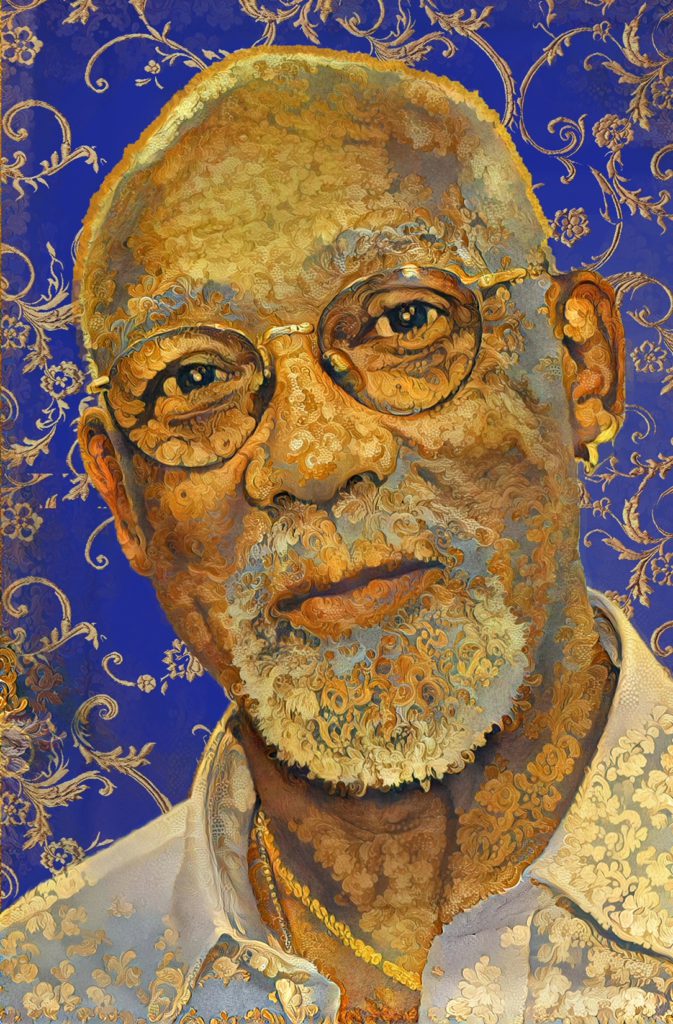
Illustrations. by Nettrice Gaskins
Written by Kendall Kendrick.

